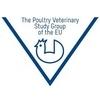Explore all the information on
Porcine circovirus diseases
Porcine circovirus diseases have traditionally been defined as those associated with porcine circovirus 2 (PCV-2) infection. However, this terminology should be revised because the advent of the novel porcine circovirus 3 (PCV-3) may expand the clinicopathologic outcome caused by porcine circovirus infections. Porcine circovirus 1 (PCV-1) is still considered a nonpathogenic agent for swine.
Historically, PCV-1 was described as a noncytopathogenic, picornavirus-like contaminant in the porcine kidney cell line PK-15 (ATCC-CCL33). This agent was later shown to be a small, nonenveloped virus containing a single-stranded, circular DNA genome; it was named porcine circovirus (PCV). PCV antibodies in swine were found to be widespread, and experimental infections with this virus in pigs did not result in clinical disease, suggesting that PCV was nonpathogenic.
PCV-2 has been further associated with a number of disease syndromes in pigs, so the term porcine circovirus disease (PCVD) was proposed as a collective name. The terms PCV2-systemic disease (PCV2-SD) and PCV2-reproductive disease (PCV2-RD) have been proposed to replace PMWS and PCV2-associated reproductive failure, respectively. Moreover, it is currently thought that the most important PCVD is the PCV2-subclinical infection (PCV2-SI), which is linked with growth retardation without overt clinical signs. Porcine dermatitis and nephropathy syndrome (PDNS) is also included as a PCVD, although there is still no proof that PCV2 is the antigen linked with this immunocomplex disease.
PCV-3 has been recently linked with reproductive disorders and multisystemic inflammation associated with vasculitis, as well as with PDNS. Like the other porcine circoviruses, PCV-3 is found worldwide.
Comments related to #Porcine circovirus diseases
Top 10 content about #Porcine circovirus diseases










